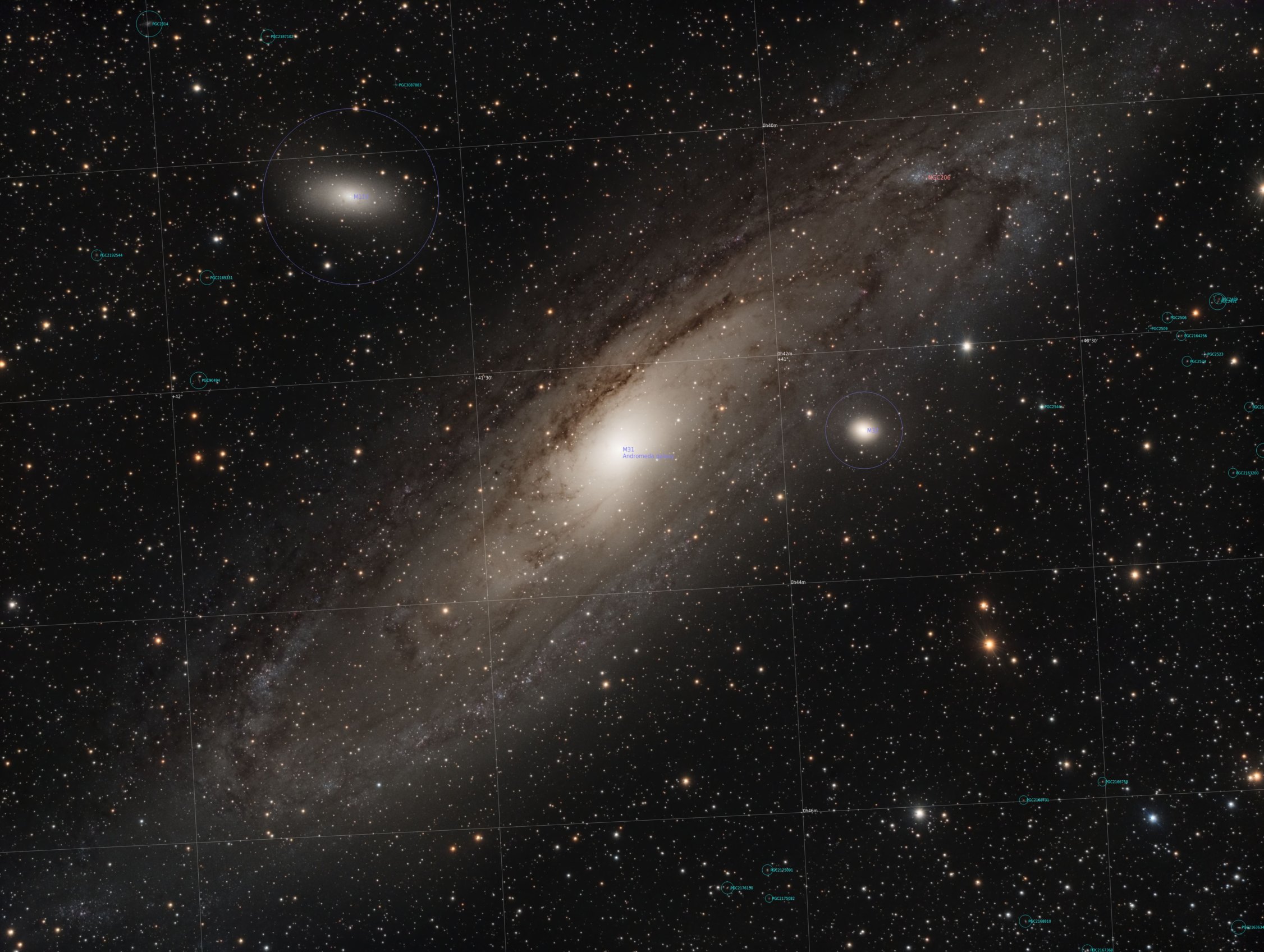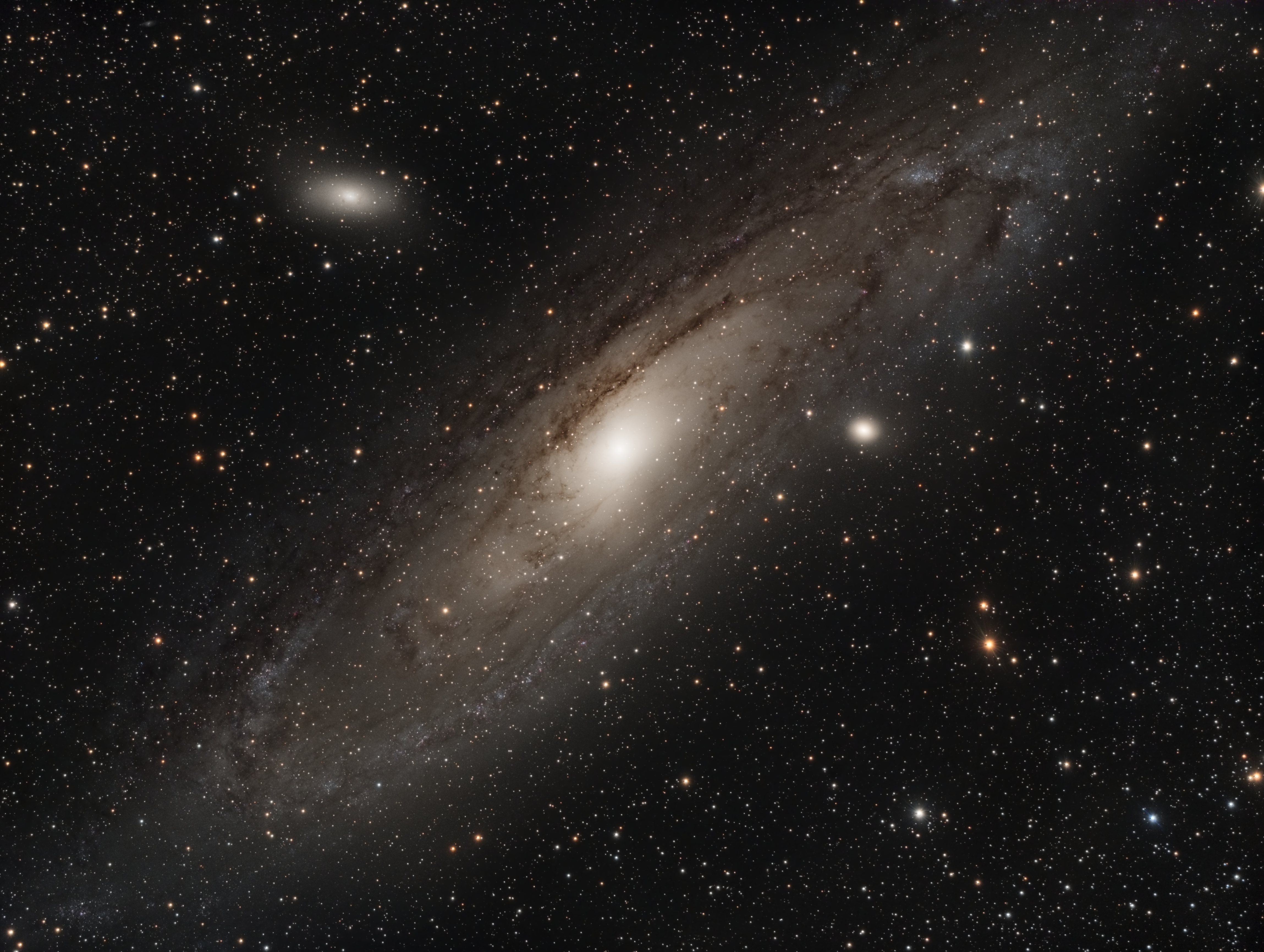Messier 31, or more commonly known as the Andromeda Galaxy, is one of the largest members of our local group of galaxies. Charles Messier added it to his catalog in 1764.
Until 1917 it was thought it was just a nebula located in our galaxy until Heber Curtis observed several nova in M31 and recorded they were about 10 magnitudes dimmer than the local ones in our galaxy. He proposed that M31 was a separate galaxy apart from ours. His theory wasn't proven until 1923 when Hubble measuring Cephid variables visible in M31 and measured its distance at 750,000 light years. In 1943 Walter Baade doubled the distance by measuring the different types of stars in the central region of the galaxy, and discovering two types of Cephid variable stars in the galaxy.
The galaxy is thought to have been shaped by the merger small galaxies 10 billion years in the past, and it appears the Andromeda galaxy and the Milky Way galaxy may merge in around 4 billion years.
Also visible are two of its at least 14 satellite galaxies of M32 and M110.

NGC 206 is a large star cloud consisting of many bright O and B stars located in the galaxies disk.

M31 imaged with the ED80CFT and Zwo1600 mono camera, NGC206 imaged with RC10.
